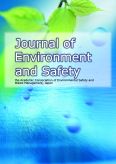Volume 8, Issue 2
Displaying 1-4 of 4 articles from this issue
- |<
- <
- 1
- >
- >|
Special Issue Proceedings
Proceedings of ACSEL2016, The 3rd Asian Conference on Safety and Education in Laboratory July 14-15, 2016
-
2017Volume 8Issue 2 Pages 49-52
Published: 2017
Released on J-STAGE: November 14, 2017
Download PDF (229K) -
2017Volume 8Issue 2 Pages 53-56
Published: 2017
Released on J-STAGE: November 14, 2017
Download PDF (1882K)
General Issue
Research Paper
-
2017Volume 8Issue 2 Pages 57-63
Published: 2017
Released on J-STAGE: November 14, 2017
Advance online publication: January 21, 2017Download PDF (1788K)
Short Communication
-
2017Volume 8Issue 2 Pages 65-71
Published: 2017
Released on J-STAGE: November 14, 2017
Advance online publication: November 07, 2017Download PDF (1380K)
- |<
- <
- 1
- >
- >|
